
WANTED: Individual or team to take over this project. I'm in my 70's and want to put my feet up. Contact details in footer.
| GCSE Sequential Logic BCD Counting D Type Flip Flop D Type Latch Decade Counter Sequencer >Up Counter< |
Sequential Logic Up Counter |
|
On the rising edge of the clock pulse, the input (D) is copied to the output (Q).
Since Q is connected to D, the output is inverted on the rising edge.
A ripple counter is an asynchronous counter where only the first flip-flop is clocked by an external pulse.
All subsequent flip-flops are clocked by the output of the preceding flip-flop.
The counter output might be momentarily wrong until the clock pulse has reached every the flip-flop.
This takes about 20 nanoseconds per flip-flop.
In decimal this counts 0 1 0 1 0 1 and in binary, it's the same.
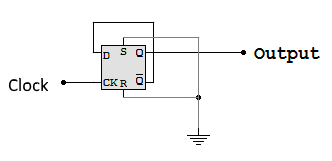
View counter in the Lushprojects Simulator.
In decimal, this counter counts 0 1 2 3 0 1 2 3 0 1 2 3 and in binary, 00 01 10 11 00 01 10 11 00 01 10 11 00 01 10 11 .
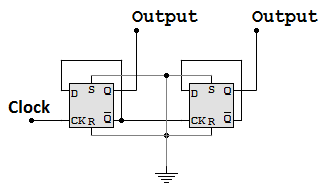
View counter in the Lushprojects Simulator.
On the rising edge of the clock pulse, D is copied to Q.
Since NOT Q is connected to D, the data is inverted on each rising edge.
This has the effect of dividing the frequency by two.

The two NAND gates are connected as a Bistable Flip Flop. This is used to debounce the switch pulses. The 4013 D Type Flip Flop is wired as a one bit binary counter. Each time the Bistable LED comes on (the rising edge), the counter LED changes state. This counter counts 0, 1, 0, 1, Etc.
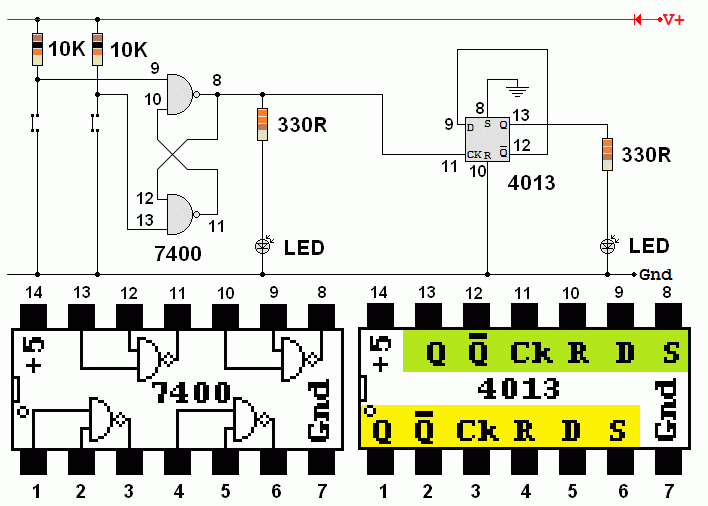
This is a slightly odd circuit because two different families of logic chips are being used.
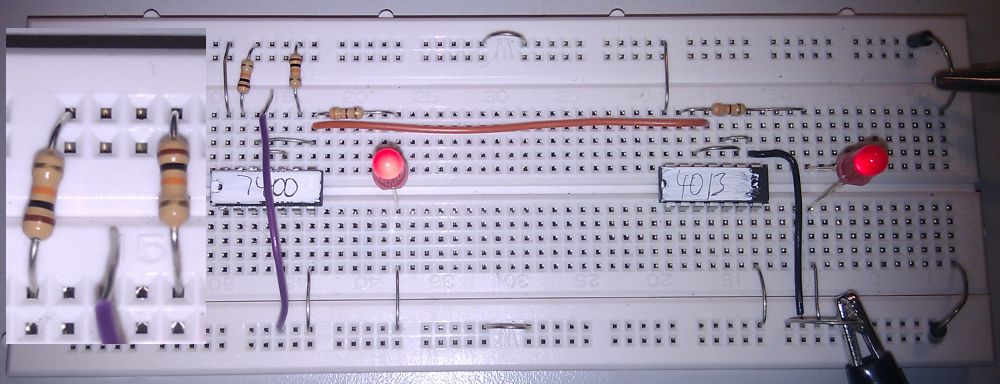
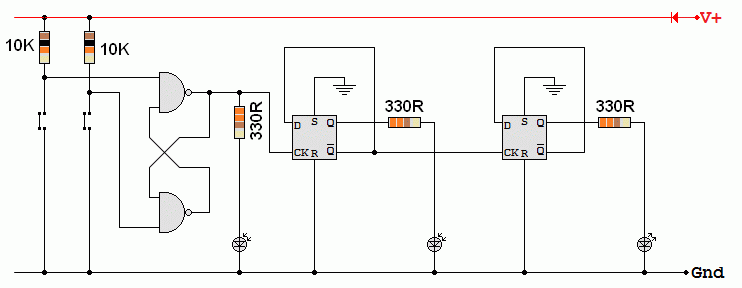
Subject Name Level Topic Name Question Heading First Name Last Name Class ID User ID
|
Q: qNum of last_q Q ID: Question ID Score: num correct/num attempts Date Done
|
Question Text
image url
Help Link
Add Delete Clone Edit Hardness
Contact, Copyright, Cookies and Legalities: C Neil Bauers - reviseOmatic V4 - © 2016 to 2026
Hosted at Akamai Cloud - London
Please report website problems to Neil